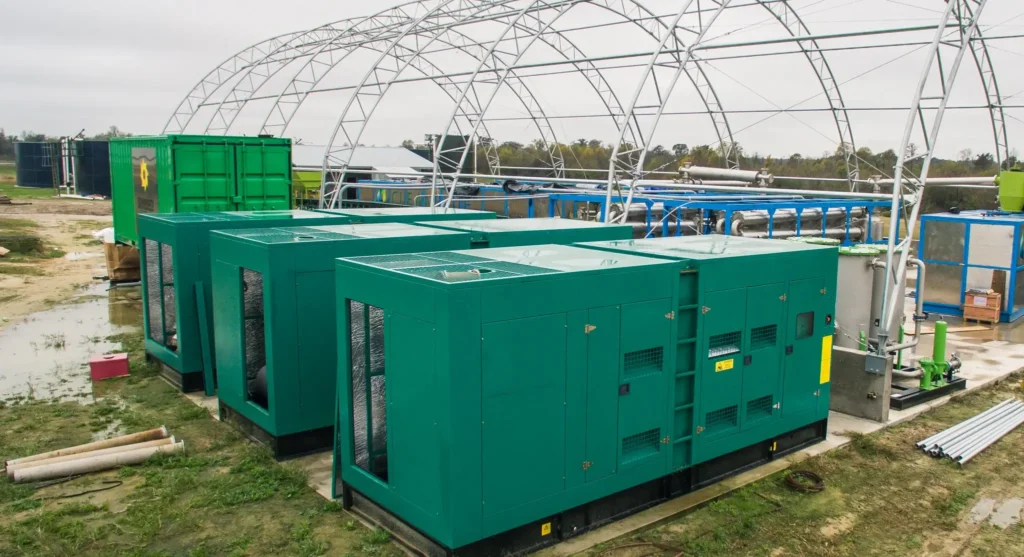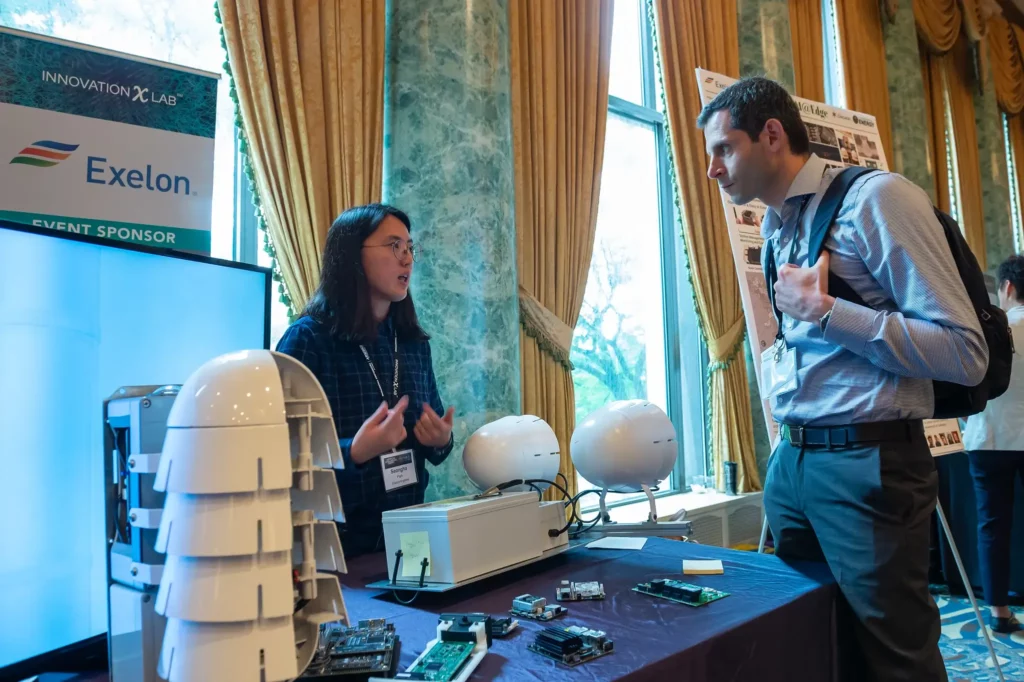Consider an Onan generator if you are looking for a reliable and versatile generator for your home, RV, or business. Onan generators are a brand manufactured by Cummins, a global leader in power solutions. Onan generators are known for their quality, durability, and performance, as well as their wide range of models and features.
But how do you choose the best Onan generator for your needs? What critical factors impact Onan generator performance, efficiency, and maintenance? How do you operate and troubleshoot an Onan generator? In this comprehensive guide, we will answer all these questions and more. We will also provide tips and tricks to get the most out of your Onan generator. So, let’s get started!
What is an Onan Generator?
An Onan generator is a type of generator that uses an internal combustion engine to convert fuel into electrical energy. A generator consists of two main components: a motor and an alternator. The engine burns the fuel and produces mechanical power transferred to the alternator. The alternator converts the mechanical energy into electrical power and then delivers it to the needed appliances or devices.
Onan generators are designed to provide backup or supplemental power in case of power outages, emergencies, or remote locations. They can also power recreational vehicles like motorhomes, trailers, or campers. Depending on the model and configuration, generators can run on various fuel types, such as gasoline, diesel, propane, or natural gas.
Onan generators are available in different sizes, capacities, and features, depending on the intended use and application. Some of the common types of Onan generators are:
- Onan Portable Generators:
These are small and lightweight generators that can be easily transported and stored. They are ideal for camping, tailgating, or outdoor events. Depending on the fuel tank size and load, they can provide power for a few hours or days. They usually have a power output of 2,000 to 12,000 watts and can run on gasoline or propane.
- Onan Home Standby Generators:
These are large and heavy generators that are permanently installed outside the home. They are connected to the home’s electrical system and automatically turn on when the utility power fails. Depending on the transfer switch and load, they can provide power for the entire house or selected circuits. They usually have a 10,000 to 60,000 watts power output and can run on natural gas or propane.
- Onan RV Generators:
These generators are designed for recreational vehicles like motorhomes, trailers, or campers. They are mounted on the chassis or in a compartment of the RV and provide power for the appliances and devices inside the RV. They usually have a power output of 2,500 to 12,500 watts and can run on gasoline, diesel, or propane.
What Key Factors Impact Onan Generator Performance, Efficiency, and Maintenance?
Onan generators are designed to provide reliable and consistent power but require proper care and maintenance to ensure optimal performance and efficiency. Several factors can affect the operation and lifespan of an Onan generator, such as:
- Fuel Type and Quality:
The type and quality of the fuel used in an Onan generator can significantly impact its performance, efficiency, and maintenance. Different fuel types have other characteristics, such as energy density, volatility, viscosity, and emissions. For example, gasoline has a high energy density, volatility, low viscosity, and increased emissions. Diesel has a low energy density and volatility, high viscosity, and low emissions. Propane has a moderate energy density, volatility, and low viscosity and emissions. Natural gas has a low energy density and volatility but also a low viscosity and emissions. The fuel quality can also vary depending on the source, storage, and handling. For example, fuel can become contaminated with water, dirt, or microbes, affecting combustion and performance. Therefore, it is essential to use the recommended type and quality of fuel for your Onan generator and follow the manufacturer’s instructions for fuel storage and treatment.
- Load and Usage:
The load and usage of an Onan generator can also significantly impact its performance, efficiency, and maintenance. The load refers to the amount of power drawn from the generator by the appliances or devices connected to it. The usage refers to the frequency and duration of the generator operation. For example, a generator running at full load for a long time will consume more fuel and produce more heat and wear than a generator running at partial load for a short time. Therefore, it is essential to match the load and usage of your Onan generator to its capacity and specifications and avoid overloading or underloading it. It is also advisable to vary the load and usage of your Onan generator periodically and avoid running it at the same load and speed for a long time, as this can cause carbon buildup and engine damage.
- Environment and Climate:
The environment and climate where an Onan generator is located can also significantly impact its performance, efficiency, and maintenance. The environment and climate can affect the generator operation’s temperature, humidity, altitude, and air quality. For example, a generator operating in a hot and humid environment will have a lower power output and efficiency than a generator running in a cool and dry environment. A generator operating at a high altitude will have a lower power output and efficiency than a generator operating at a low altitude. A generator operating in a dusty or polluted environment will have a lower power output and efficiency than a generator running in a clean and clear environment. Therefore, it is essential to consider the environment and climate where your Onan generator is located and adjust its settings and maintenance accordingly. Protecting your Onan generator from extreme weather conditions, such as rain, snow, wind, or sun, and providing adequate ventilation and cooling is also advisable.
How do you operate and troubleshoot an Onan generator?
Operating and troubleshooting an Onan generator is relatively easy but requires some basic knowledge and skills. Here are some of the common questions and answers that can help you operate and troubleshoot your Onan generator:
- How to start an Onan generator? To create an Onan generator, you need to follow these steps:
- Check the fuel level and quality, and refill or replace the fuel if necessary.
- Check the oil level and quality, and add or change the oil if necessary.
- Check the air filter and spark plugs, and clean or replace them if necessary.
- Check the battery and connections, and charge or replace the battery if necessary.
- Turn on the fuel valve and the main switch, and set the choke to the start position if applicable.
- Press the start button, pull the recoil cord, and release it when the engine starts.
- If applicable, set the choke to the run position and let the engine warm up for a few minutes.
- Connect the appliances or devices you want to power, and adjust the load and speed as needed.
How to reset an Onan generator?
To reset an Onan generator, you need to follow these steps:
- Turn off the main switch and the fuel valve, and disconnect the appliances or devices powered by the generator.
- Wait for the engine to cool down completely, and check the fuel and quality, the oil and quality, the air filter and spark plugs, and the battery and connections.
- Fix any problems or issues you find, and replace any damaged or worn-out parts.
- Turn on the fuel valve and the main switch, and start the engine as usual.
- Connect the appliances or devices you want to power, and adjust the load and speed as needed.
How do I get Onan generator fault codes?
To get Onan generator fault codes, you need to follow these steps:
- Locate the diagnostic LED on your Onan generator’s control panel or remote panel. The diagnostic LED is a small light that flashes a series of codes to indicate the status and condition of your Onan generator.
- Count the number and pattern of the flashes of the diagnostic LED and compare them with the fault code chart in your Onan generator manual or online. The fault code chart will tell you the meaning and cause of each fault code and the possible solutions and actions to take.
- Follow the instructions and recommendations for each fault code and fix any problems or issues. If the fault code persists or you cannot fix it, contact your Onan generator dealer or service center for assistance.
Conclusion
An Onan generator is an excellent choice for anyone who needs reliable and versatile power for their home, RV, or business. Onan generators are made by Cummins, a global leader in power solutions, and offer quality, durability, and performance. Onan generators come in different types, sizes, and features, depending on the intended use and application.
However, choosing an Onan generator requires some knowledge and skills. Several factors can affect an Onan generator’s performance, efficiency, and maintenance, such as fuel type and quality, load and usage, and environment and climate. Some common questions and answers can help you operate and troubleshoot your Onan generator, such as how to start, reset, and get fault codes.
In this comprehensive guide, we have covered all these topics and more. We hope that this guide has been helpful and informative for you. We also hope you have enjoyed using your Onan generator as much as we have.
So, what are you waiting for? Get your Onan generator today and enjoy the power of Cummins!







